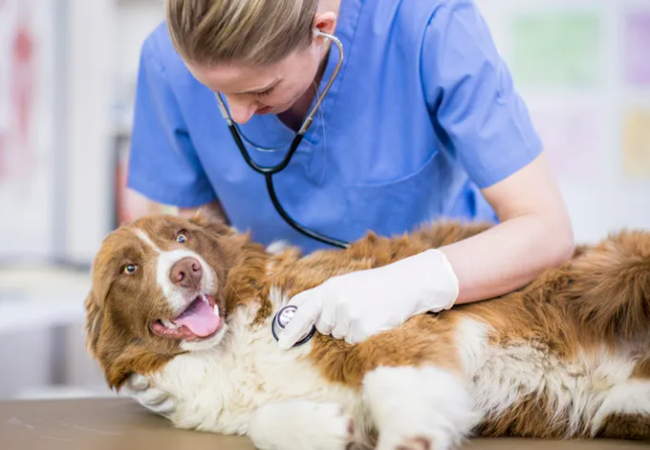Vet’s 2025 Guide to Pelger–Huët Anomaly in Dogs Understanding Hyposegmented Neutrophils🩺

In this article
Vet’s 2025 Guide to Pelger–Hüet Anomaly in Dogs: Understanding Hyposegmented Neutrophils🩺
By Dr. Duncan Houston BVSc
💡 Introduction
Pelger–Huët anomaly (PHA) is a benign, inherited blood condition in dogs where certain white blood cells—neutrophils and eosinophils—show hyposegmented nuclei (bilobed or not segmented), yet retain normal function. Though alarming under the microscope, it poses no health risk, but must be distinguished from serious conditions.
1. What Is Pelger–Hüet Anomaly?
PHA results from a mutation in the LBR gene (or LMBR1L in some breeds like Australian Shepherds), altering granulocyte nuclear maturation. Heterozygous dogs (one copy) display characteristic “pince-nez” or dumbbell-shaped nuclei and coarse chromatin, yet are clinically healthy. Homozygous dogs (two copies) often die in utero or are stillborn, sometimes showing skeletal defects.
2. How Common Is It?
Breed-specific studies show:
- Australian Shepherds: up to ~10 % affected.
- Also found in Samoyeds, Basenjis, Border Collies, Foxhounds, German Shepherds, Cocker Spaniels, Boston Terriers and mixed breeds.
- Overall prevalence of hyposegmentation in dogs is ≈0.45 %.
3. Recognizing the Appearance 🔍
On a blood smear with Wright or Panoptic stain, look for granulocytes with:
- 1–2 nuclear lobes or dumbbell/bilobed shapes
- Coarse, mature chromatin—unlike immature bands.
- Most neutrophils and eosinophils were affected uniformly
Unlike left-shifted cells in infection, PHA cells lack toxic changes like vacuolation or Döhle bodies.
4. Differentiating from Pseudo‑PHA
Pseudo Pelger Huët anomaly arises secondary to serious issues such as infection, drug effects, leukemia, or myelodysplasia. In these, only some neutrophils are affected and show toxic granulation, plus other blood abnormalities.
5. Clinical Impact & Testing 💡
Impact: None for heterozygous dogs—they have normal immune function.
Diagnosis: Recognized during routine CBC/WBC differential and confirmed with smear review. Family testing may identify carriers.
6. Treatment & Management
- No treatment required unless evaluating for other diseases.
- Breed screening is encouraged if considering breeding.
7. Breeding Considerations 🧬
As an incomplete dominant trait:
- Heterozygotes are healthy but can pass the mutation.
- Heterozygote × heterozygote pairing risks homozygous offspring, which rarely survive.
- Testing breeding dogs is recommended, especially in predisposed breeds.
8. Ask A Vet Support 🩺
- 24/7 guidance—explain lab findings and reassure owners
- Breeding advice and referrals to veterinary pathologists for smear review
- Track bloodwork results and alerts for pseudo‑PHA if sudden neutrophil changes occur
9. Research & Insights (2025) 🔬
Recent Bayesian analysis confirmed breed-specific prevalence and clarified genetics: Australian Shepherds show recessive inheritance via the LMBR1L gene, prompting reconsideration of terminology (hyposegmentation vs PHA).
🔍 Key Takeaways
- Pelger–Hüet anomaly is a benign genetic blood condition characterized by hyposegmented granulocyte nuclei.
- Differentiating from disease is essential—look for uniform involvement, absence of toxic change.
- No treatment needed; heterozygous dogs function normally.
- Breeding guidance helps avoid homozygous lethal outcomes.
- Ask A Vet helps pet owners interpret results and manage breeding decisions with confidence.
🩺 Conclusion ❤️
Pelger–Hüet anomaly may look alarming under the microscope, but in dogs, it’s typically a harmless inherited quirk. With proper understanding, diagnosis, and breeder awareness, it causes no health issues. In 2025, veterinarians can reassure owners and focus efforts on cases with real blood disorders. Ask A Vet offers expert support to explain lab results, guide genetic screening, and support breeders every step of the way. 🐶✨
Dr Duncan Houston BVSc – blending scientific precision with clear, compassionate communication.
Explore more at AskAVet.com and download the Ask A Vet app for insight into your dog’s bloodwork, personalized pet care guidance, and breeding support. ❤️






